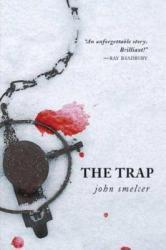The Trap relates the story of an elderly native man named Albert Least-Weasel and his grandson, Johnny Least-Weasel. Albert is out in the Alaskan wilderness checking his traplines. When he doesn’t return on time and the temperature drops, Johnny and Albert’s wife begin to worry about the old man. Johnny believes he should go out and look for his grandfather, but others in the community advise him against this action, suggesting that his Grandfather is fine because he knows what he is doing. Johnny has mixed feelings between the advice of his elders in the community and his own instinct. The choice he makes will have a direct impact on the survival of his Grandfather.
However, The Trap is more than just a story about survival, it is also about the internal stories we tell ourselves as we face difficult situations and navigate challenges. The main characters reflect on their own story, memory and myth as they struggle through their individual conflicts. The author’s skillful use of learning tales and folklore deepens the experience of Albert and Johnny Least-Weasel while teaching the reader about being a part of the land and a culture that is defined by the world they live in. Alternating views between Johnny and his Grandfather allows the reader to experience the hardship of the Grandfather and feel the anxiety of Johnny. The Trap is a good read; I would recommend it to readers who enjoy survival and folklore.
